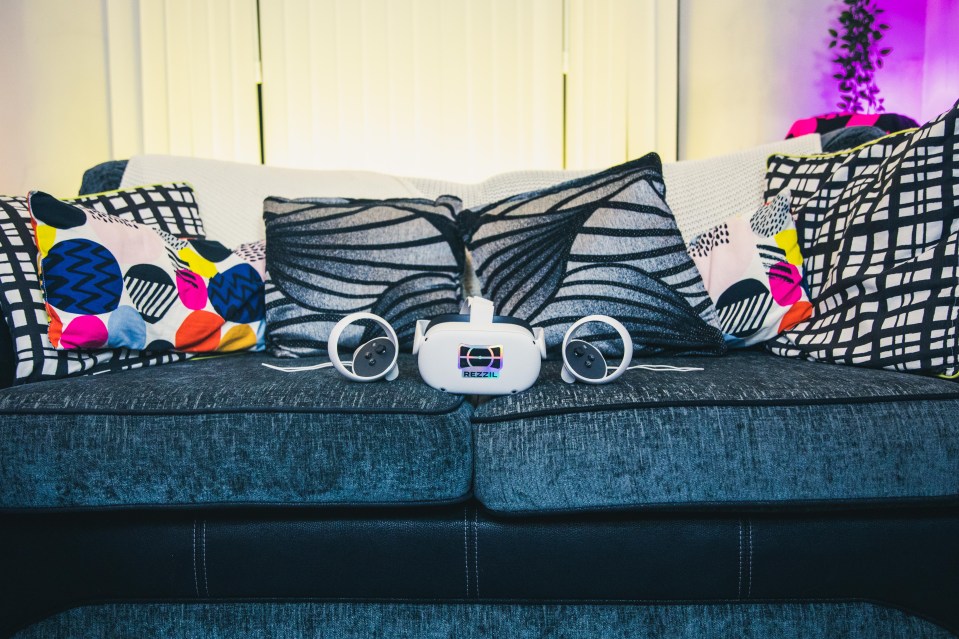Best of 2021: Football training can be safer with VR technology

Technology is ever-changing, and that includes in sport too. Matt Hardy took a look at how new VR could revolutionise the way football teams train. Originally published on October 15.
A whipped cross and a powerful header towards goal are staples of football and the essence of set-piece tactics used by every football team.
But building Cristiano Ronaldo-like leg power to spring higher than your opponent and honing the skill to guide the ball into the net requires endless training drills.
The other, more serious problem, is that footballers who head the ball face an increased risk of neurodegenerative disease than those who don’t or simply don’t play at all.
That stark fact forced those running the game in England to issue guidance earlier this year recommending that heading be minimised.
For professionals, that means allowing no more than 10 “higher force” headers in training per week. For under-11s, meanwhile, it has been removed altogether.
It is here that sport’s ever-growing reliance on technology can help.
From the GPS vests now ubiquitous in football that provide reams of player data to smart mouthguards in rugby and boxing which measure the severity of impacts, tech has become an integral part of the preparation and protection of elite sportspeople.
Now virtual reality is being harnessed to allow footballers to practise heading without actually needing to touch a ball, through training software such as Rezzil’s Player 22.
The programme offers a number of drills for perfecting different aspects of heading, from the basic – heading a ball through a hoop; clearing a cross – to the more advanced, such as nodding a corner into a specific section of the goal.
Rezill’s technology is backed by stars Thierry Henry, Vincent Kompany and Gary Neville and is used by several of the Premier League’s very biggest clubs.
“We don’t want to stop heading, we want to mitigate against the impact of heading,” Rezzil founder Andy Etches told City A.M..
“The product only has to be as good as heading a real ball for it to be useful. So far the science does say it’s as good, realistically, as heading a ball.
“We’ve worked with elite teams globally and there’s no way they’d have this system if it wasn’t good enough.”
Amateur footballers can use Player 22 on existing virtual reality headsets, such as Oculus Quest. Elite clubs, meanwhile, use tailored versions of the software to practice, for example, set-piece routines before specific matches.
“Most teams are very receptive, but we always have the odd one,” adds Etches. “They are the ones who were looking at GPS vests five years ago and saying no one will ever use them, technology is just part of the game now.”
Premier League greats such as Henry, Kompany and Neville were among those to participate in a £2m funding round this summer, but their input has not been limited to injecting capital.
“These people have fed into the system, the pros and the other investors,” Etches said. “We’ve had conversations with Henry about what matters to him and how he positioned himself and with Kompany on clearing headers.”
Neville, meanwhile, says Player 22 “enables people to experience sport like never before” and for athletes to “train, crucially, without adding load”.
A study by the University of Glasgow concluded in August that professional footballers who frequently head the ball are four or five times more likely to develop neurological problems, such as dementia.
Professor William Stewart, who led the study, recommended that “a precautionary principle approach should be adopted to reduce if not eliminate exposure to unnecessary head impacts and better manage head injuries in football and other sports.”
Etches set up Manchester-based Rezzil in 2017 with the aim of creating VR-based training tools for amateur and pro sportspeople.
Heading is just one part of Player 22 and the company’s product range, which also includes passing drills. That they have found themselves at the cutting edge of player safety is “a happy accident”, he says.
“We’re not just going down the safety angle, we just so happen to have created something effective in that space,” Etches added.
“It wasn’t our intention to come out and create something specifically for head injuries, we wanted to make a football trainer game, and it just so happens that it’s very effective in training and mitigating against those injuries.”